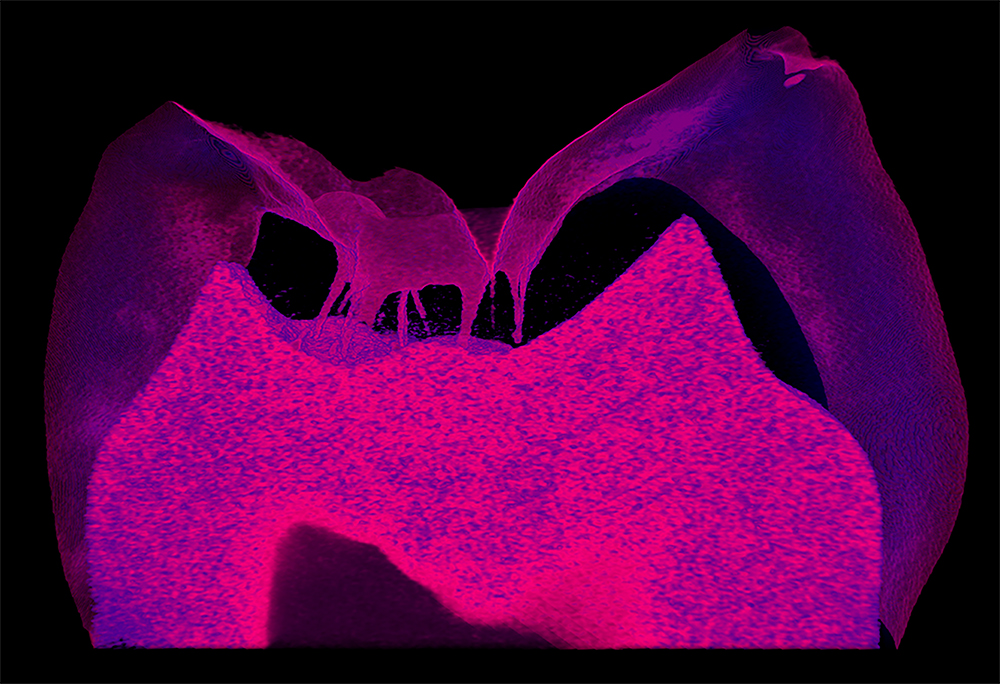
USC researchers are closer than ever to being able to regrow enamel, thanks in part to a recent scientific discovery published in the latest issue of the journal Biomaterials.
In the article, Malcolm Snead, who is chair of the division of biomedical sciences at the Herman Ostrow School of Dentistry of USC and a USC Stem Cell principal investigator, shared research that could provide more insight into the molecular processes behind enamel formation and regeneration.
In natural enamel formation, which occurs during embryogenesis, chemical signals initiate a process whereby an enamel matrix protein is produced. These proteins assemble themselves in a way to create a “scaffold” around the tooth.
It is on this so-called scaffold that mineralization occurs. Composed of 96 percent of minerals, tooth enamel contains the highest percentage of minerals of any bodily tissue, which is what gives it such strength.
Eventually, the scaffold is removed, leaving only strong, wear-resistant enamel tissue behind.
While the enamel is incredibly strong, it’s not impervious. Once it begins to erode—whether through acid wear or the dreaded cavity due to caries infection—it’s gone forever.
Snead and his research team hope to address this biological shortcoming.
In the study, they essentially programmed cells to initiate enamel formation by introducing nanotechnology—produced at the Stupp Laboratory at Northwestern University—into the developing teeth of mice.
The nanotechnology—a synthetic extracellular matrix of self-assembling proteins—provides the necessary chemical signals to produce the “scaffold” and start the process of mineralization.
During the process, Snead discovered that the thrombospondin-2 gene, which up until this point was not known to be involved in enamel formation, was a key player.
He also found that by disrupting the thrombospondin-2 gene, enamel formation was disordered and highly susceptible to wear, he explained.
While the amount of enamel produced was small, Snead explains the discovery still holds promise. The team will next set out to improve the process so that they can produce enamel on a larger scale, which could one day change the way dentists treat cavities.
Ostrow research assistant professor Yan Zhou and research lab specialist Ya-Ping Lei contributed to this study.
Outside researchers Christina Newcomb, a postdoctoral researcher at Northwestern University, and Samuel I. Stupp, director of the Stupp Laboratory as well as the Simpson Querrey Institute for BioNanotechnology were also heavily involved with the study.
